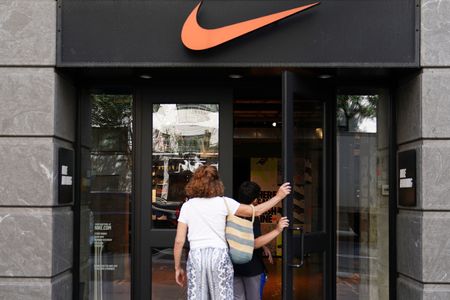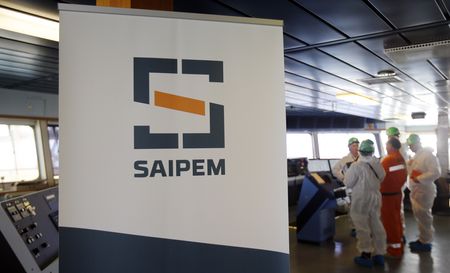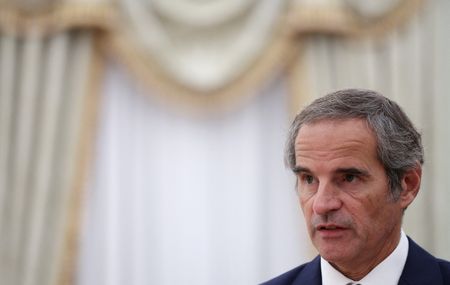By Juveria Tabassum and Nicholas P. Brown
(Reuters) -Nike on Tuesday reported a surprise rise in first-quarter revenue and beat expectations for quarterly profit as the storied sportswear brand’s turnaround effort gains traction despite tariffs pressuring margins.
Shares rose 3.4% in extended trading as the company also managed to clear some of their bloated inventory.
Nike now expects tariffs to cost it about $1.5 billion, compared with the $1 billion expected earlier, and executives offered cautious comments about the pace of improvement.
“Nike beat the low bar set for EPS and showed some wholesale strength, but the underlying fundamentals are still shaky. DTC weakness, margin pressure, and China softness are flashing yellow lights,” said David Bartosiak, stock strategist at Zacks Investment Research.
While wholesale revenues returned to growth in the quarter, rising 5% on a currency neutral basis, margins still faced a drag from higher costs of products due to tariffs — Nike makes nearly all its shoes in countries hit with steep duties under U.S. President Donald Trump.
The company’s first-quarter revenue rose 1% on a reported basis to $11.72 billion. Analysts had expected a fall of 5.1% to $11 billion, according to data compiled by LSEG.
“We still have work ahead to get all sports, geographies, and channels on a similar path as we manage a dynamic operating environment,” CEO Hill, a Nike veteran, said in a statement.
Hill, who took the reins last year, has vowed to refocus the brand around core sports like running after a string of weak quarters, and to producing the kind of cutting-edge products Nike was known for.
Sales in Greater China fell for the fifth straight quarter as Nike struggles to drum up demand in the face of stiff competition and weak consumer appetite for its products.
The company has also lost market share to younger rivals such as On and Deckers’ Hoka that are increasingly seen as more exciting.
Nike’s finance chief Matthew Friend said “progress will not be linear as dimensions of our business recover on different timelines”.
“While we navigate several external headwinds, our teams are focused on executing against what we can control.”
The company’s gross margin for the quarter ended August 31 decreased 320 basis points to 42.2%, following a 440-basis-point fall in the preceding three-month period.
It reported first-quarter earnings per share of 49 cents, handily beating estimates of 27 cents, as it gained some ground in reducing inventory levels in the quarter.
(Reporting by Juveria Tabassum in Bengaluru and Nicholas P. Brown in New York; Editing by Devika Syamnath)











